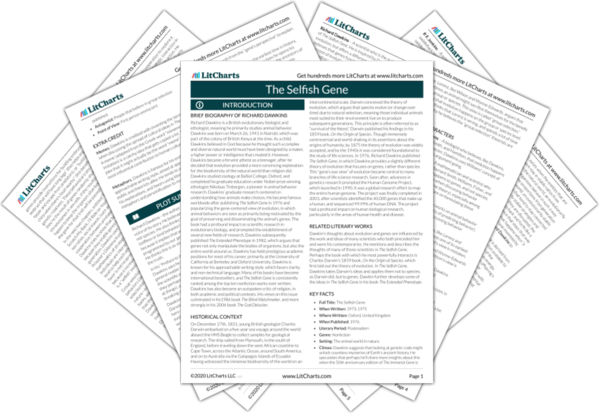Dawkins reminds the reader that successful genes perpetuate themselves in the long-term picture of evolution. Every gene that exists now came from the same source: it was a miscopy of a replicator. All the human genes in the world are related in a sense, since they evolved from the same ancestor genes. In a sense, we’re all related. It really doesn’t make sense to draw a hard line between kin and strangers, as group selectionists do. The only thing that matters is the number of genes two survival machines have in common.


